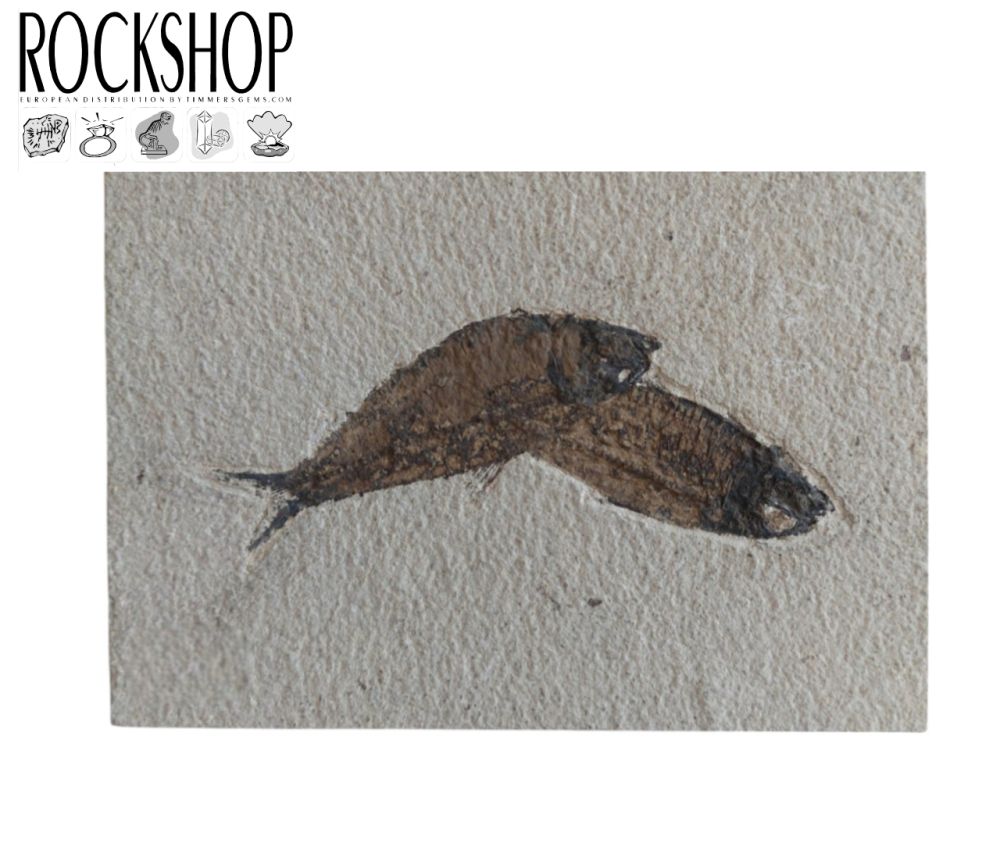We use cookies to make your experience better.
TimmersGems has a new website, existing customers also need to register again.
Fossil Knightia (2 fossils) from Wyoming, U.S.A. The world's most beautiful and coveted fossil fish.
In the mineralium we have very special fossils, such as megalodon teeth, ammolites, life-size ortocerases, mammoth fragments, etc.
Availability:
In stock
SKU
122184
- Buy 5 for €45.00 each and save 18%
Knightia is an extinct genus of clupeiform bony fish from the family Herringidae that lived in the freshwater lakes and rivers of North America during the Eocene. The genus was named in 1907 by David Starr Jordan, in honour of the late University of Wyoming professor Wilbur Clinton Knight, "an indefatigable student of Rocky Mountain palaeontology". Knightia is the state fossil of Wyoming and is the most frequently excavated fossil fish in the world. Fossils include all the remains and traces of plants and animals preserved in rocks. Contrary to popular belief, fossils are not necessarily "petrified"; indeed, many fossils are not petrified. Even in very old rocks, fossil remains have been found that have undergone little change. Nor are fossils always very old; many recent fossils are known, formed during periods that people can remember. Palaeontology, the science of fossils, contributes to the study of the succession of rocks, a branch of geology called biostratigraphy. Because the remains of life fossilise only under specific conditions, fossil information is limited and inherently "incomplete". The word fossil is often associated with the bones of dinosaurs or mammoths, and indeed the hard parts of an organism are most likely to be preserved through fossilisation. For vertebrates, these are the bones and especially the teeth. The softer tissues of an organism are rarely preserved unless they are quickly covered by a layer that provides protection against decay or predation. With only the hard parts, it can be difficult to get a complete picture of the organism. An example of this is the Conodonta, which for a long time were known only from their tooth-like fossils.
| Dimensions | Medium size |
|---|---|
| Country of Manufacture | United States |












